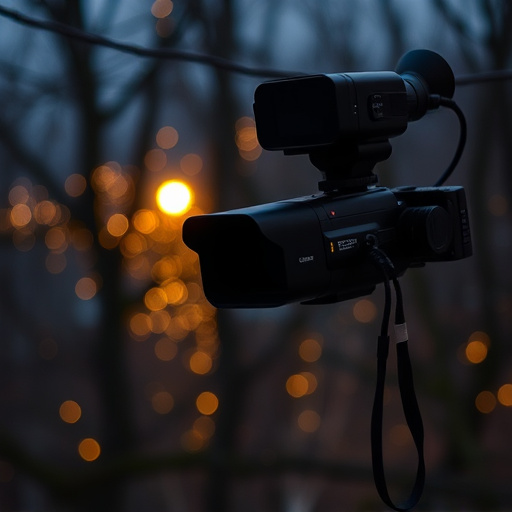Rental properties with pet monitoring cameras require landlords to disclose and adhere to privacy laws, obtaining tenant consent. Tenants have a right to reasonable privacy, and camera placement should avoid personal spaces. Pet cameras offer security but must be used ethically, with transparent communication. Detecting hidden surveillance is crucial; tenants can protect privacy using pet cameras disguised as feeders or toys while inspecting for unusual wiring.
In today’s digital age, understanding privacy rights within rental properties is more crucial than ever. This article delves into the intricate world of secret surveillance spots in homes, focusing on common hidden cameras and the ethical implications of pet monitoring devices with alerts. We explore rental agreements, privacy laws, and practical tips for detecting and preventing unauthorized surveillance equipment. Get ready to navigate this modern-day enigma and ensure your peace of mind as a tenant.
- Understanding Rental Agreements and Privacy Laws
- Common Discreet Surveillance Locations in Homes
- Pet Monitoring Cameras: Benefits and Ethical Considerations
- Detecting and Preventing Secret Surveillance Devices in Rentals
Understanding Rental Agreements and Privacy Laws
Rental properties often come with a set of agreements and laws that protect both landlords and tenants. It’s crucial to understand these legal aspects, especially when considering the installation of devices like pet monitoring cameras with alerts. Landlords must disclose any such surveillance systems in advance, ensuring transparency. Tenants have a right to privacy, so any camera placement should be reasonable and not invade personal spaces.
Privacy laws vary by region, and it’s essential to comply with them. For instance, many jurisdictions require explicit consent for recording or monitoring. Landlords must adhere to these rules, and tenants should review their rental agreements thoroughly. Being aware of one’s rights and obligations is key when dealing with potential privacy concerns in a rental property, including the use of technology like pet cameras.
Common Discreet Surveillance Locations in Homes
In the quest for peace of mind, many homeowners turn to pet monitoring cameras with alerts as a way to keep an eye on their furry friends while they’re away. These innovative devices often blend seamlessly into the environment, disguised as everyday objects like toys or plant pots. Common discreet locations include under furniture, near doors and windows, and even within food or water bowls. Their hidden nature allows owners to remotely monitor their pets’ activities without disrupting their routines.
Surveillance technology has evolved to accommodate various needs, offering not just visual confirmation but also alerts for unexpected behavior like barking, jumping, or knocking over objects. This added functionality ensures homeowners receive instant notifications, enabling them to address potential issues promptly. Whether it’s checking in on a new pet or ensuring the safety of an elderly animal, these cameras provide valuable peace of mind.
Pet Monitoring Cameras: Benefits and Ethical Considerations
Pet Monitoring Cameras, equipped with alerts, have emerged as a double-edged sword in the realm of rental properties. On one hand, they offer landlords and tenants a sense of security and peace of mind, allowing remote monitoring of pets’ well-being, especially when homeowners are away. These cameras can capture real-time footage and send alerts for any unusual activities, ensuring timely intervention if needed. For tenants, it provides an opportunity to showcase responsible pet ownership, while landlords benefit from reduced claims related to pet damage.
However, ethical considerations cannot be overlooked. Privacy concerns top the list, as these cameras can invade the comfort and confidentiality of tenants. In today’s digital era, where data breaches are common, the potential for unauthorized access to sensitive footage is a valid worry. Moreover, unexpected behavior from pets or owners might lead to false alerts, causing unnecessary stress. Therefore, landlords should establish clear guidelines on camera usage, obtain informed consent, and ensure transparent communication to address these ethical challenges effectively.
Detecting and Preventing Secret Surveillance Devices in Rentals
Detecting secret surveillance devices in rental properties is a growing concern for tenants and landlords alike. While it’s understandable that some homeowners may want to ensure their property’s security, installing hidden cameras without consent is illegal and unethical. Tenants should be vigilant and proactive about potential breaches of privacy. One effective way to counter unauthorized surveillance is by utilizing pet monitoring cameras with alerts. These devices, often disguised as ordinary pet feeders or toys, can capture and notify users of any suspicious activity within the rental unit.
Regularly inspecting electrical outlets, strange devices, or unusual wiring is crucial in identifying hidden surveillance equipment. Tenants should also be cautious when moving into a new property, reporting any pre-existing devices that raise concerns to the landlord immediately. By staying alert and informed about potential privacy invasions, tenants can protect their personal spaces and maintain peace of mind while renting.
In light of the diverse range of surveillance technologies available, from pet monitoring cameras with alerts to hidden devices, it’s crucial for renters to understand their rights and remain vigilant. While some tools can enhance security, others may infringe upon privacy. By staying informed about both rental agreements and privacy laws, tenants can navigate this complex landscape. Regularly inspecting potential rental properties and being cognizant of common discreet surveillance locations can help protect against hidden cameras. Additionally, discussing ethical considerations, especially regarding pet monitoring cameras, ensures a balance between safety and privacy. Lastly, knowing how to detect and prevent secret surveillance devices empowers renters to secure their living spaces effectively.
